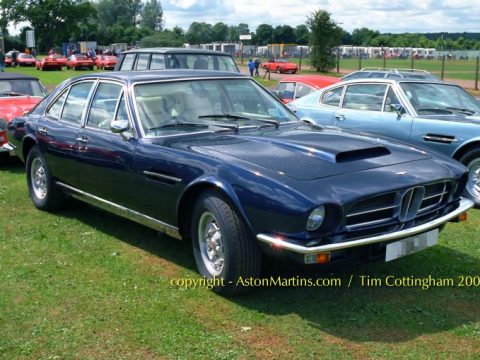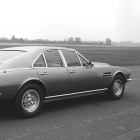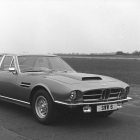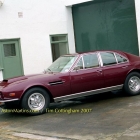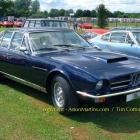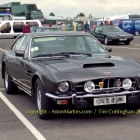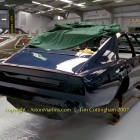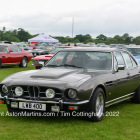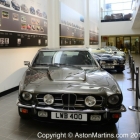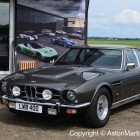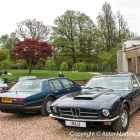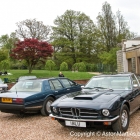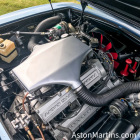The Blue car above is number 12004, photographed at Coys Festival, Silverstone in 1994. The Red car above Chassis number 2, photographed outside the showroom of Nicholas Mee in London during 2001: considered to be the most original of the seven cars.
Above is featured chassis number 5. This car has been very sympathetically updated by the Aston Martin specialist, R.S.Williams (RSW). The rear has been modified to ‘Oscar India’ specification with the neat rear integral lip, BBS cross spoke alloy wheels with the front having the discrete POW air dam and Oscar bonnet bulge. I also believe the engine has been uprated to RSW 7.0 litre specification and the interior has been updated to late 1980’s V8 spec. The car was photographed before the AMOC St. Georges day parade in Windsor in April 2005
Photographed at the Millennium Lagonda display at the AMOC Horsfall meeting, 2000, here are chassis numbers 12001 (brown car) and 12003 (light blue car). Number 1 was William Wilson’s car (initially registered SWW 6) who at the time was chairman of AML. Number 3, the 1974 Earls Court Show Car, now has an RSW 7.0 litre engine conversion.
This is the final car, chassis number 12007, which is one of the only two examples originally built with a manual gearbox, still fitted in 1998 when I saw the car. I am now led to believe that both manual cars are now converted to 7 litre RSW autos. 12007 has recently been brought upto 1989 specification and has featured in Octane, January 2004. The close up of the grille shows the headlight wash system that was standard equipment on the Lagonda.
But the four door Lagonda story wasn’t over over until 30 years later in 2007. An eighth chassis and superstructure (12008) was assembled at the factory but never finished following the company going into receivership in 1974. . After many years, Roger Bennington owner of Stratton Motor Company, the Norfolk Aston Martin dealer, tracked down both the chassis and other parts still kept in the factory parts department. The project, initially photographed in June 1998, took more than nine years to complete. Once finished in 2007, I caught up with the 12008 parked outside Sunnyside during the AM/Bonhams auction. Finished in metallic Rolls Royce Royal Blue with grey leather interior with contrasting piping, this Lagonda has been uprated to the specification of a 1989 Aston Martin Vantage, including the more powerful Vantage engine plus uprated suspension and brakes.
I believe that during the Summer of 2007, 12008, effectively a brand new car, was on sale with a substantial price tag



